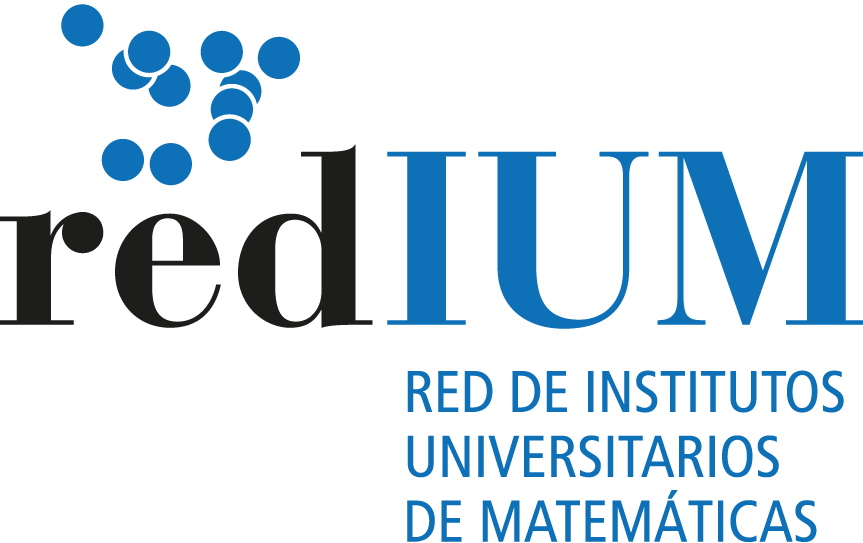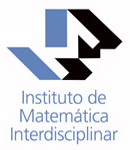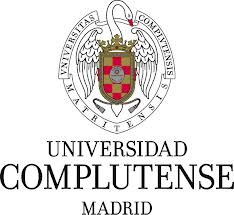- Programmes
MATLIS (Mathematics in Life and Social Sciences)
Introduction
The scientific Programme to be described below intends to explore a number of relevant problems in Biology, Medicine and Sociology where the use of advanced mathematical methods is expected to provide significant help to solve the issues therein addressed . On the other hand, the precise formulation of the questions to be considered is likely to be a source of new and challenging mathematical problems . It is therefore expected that a successful completion of the studies described below will translate into significant advances in all fields involved.
We next proceed to describe the basic research units which will constitute the core of this Programme.
Vasculogenesis.
The term vasculogenesis is used to denote the formation of blood vessels starting from their cell precursors (angioblasts) to produce vascular nets with characteristic geometrical forms. These include vessels with different sizes, ranging from capillaries to arteries and veins. This process is characteristic of the embryonic state in vertebrates, while angiogenesis (the formation of vessels from a preexisting vasculature) always leads to the formation of small vessels, and continues to happen during adulthood. We are interested in deriving models for the formation of early vasculature that could be checked against experimental data obtained from chick embryos. Such models should in particular include aspects as signalling from the endoderm, angioblasts differentiation and the onset of the first vascular networks. We are also interested in the formulation and subsequent analysis of mathematical models for advanced stages of vascular networking. In particular, such models should account for existing data on characteristic sizes and critical cell densities corresponding to a stable vasculature
Modelling and Simulation of Blood Coagulation.
Blood coagulation is a robust security mechanism of human organisms, which prevents bleeding from minor injuries to occur . Any disruption in such a system may have significant consequences. For instance, an impaired ability of blood to coagulate is cause of haemophilia, a serious hereditary disorder. On the other hand, an inordinate increase in the activation of the blood coagulation system may lead to abnormal thrombi formation, and consequently to a number of thrombotic pathologies .The process of blood coagulation makes use of a complex array of interdependent, and finely tuned , biochemical reactions (the so-called biochemical cascade, BC), of which many details are known by now . However, much remains to be done in terms of ascertaining which points in such cascade are more suitable as targets for external control , and how such control has to be implemented, in order to obtain significant therapeutic improvements with respect to current protocols.
Optimization in Radiotherapy.
Radiotherapy consists in the delivery of ionizing radiation with curative goals. It represents a major tool for treating solid tumours in any anatomical site . While the first cures of cancer by radiation were reported in 1899, shortly after the discovery of the X-rays, it was soon learnt that radiotherapy requires of precise dosimetry and delivery to hit at the lesion while sparing surrounding normal tissue. Nowadays, radiotherapy is a fully interdisciplinary technique which provides major challenges in Biology, Engineering, Medicine and Physics, and where Mathematics has already gained solid ground. Indeed , mathematical methods are paramount in Image Treatment, a key aspect in the choice of the so-called Planned Target Volume (PTV), the region that has to be irradiated . Moreover, Mathematics has also shown its strength to develop a quantitative radiobiology, that is , a detailed description of the interaction between radiation and living matter . In particular, the question of predicting the biological response to incoming radiation has become a central issue in the field during the last thirty years, once the first mathematical models for that purpose were derived.
In this Programme we plan to tackle the question of deriving an integrated model for optimal radiation delivery, starting from a sharp identification of the PTV by means of Imaging Techniques , to the design of an optimal irradiation strategy based on the study of suitable variational problems . These will often involve non-standard constraints or penalty terms, which will require of advanced variational methods to identify the corresponding minimizers, as well as to implement efficient numerical approximations thereof.
Mathematical Models of Criminality and Emergent Social Behaviours.
Crime, and in general unacceptable social behaviour, has always been a serious concern in human societies. It is to be noted that the concept of criminal behaviour includes, together with some widely accepted facts (e.g. murder), others which largely differ among various cultures and historical periods. From a modelling point of view, a given society can be considered as a playground for a number of interacting populations , whose joint evolution leads to emergent behaviours (sometimes termed as social phase transitions) while at the same time has to cope with one or several subpopulations which refuse to play by the rules - the criminals . In recent years, mathematical methods have proved their strength in dealing with the dynamical aspects of such process, a step forward with respect to the classical, static picture provide by statistical techniques.
In this Programme, we aim at deriving and analysing agent-based models of social behaviour based on population dynamics methods on the one hand, as well as on game theory on the other . Such techniques will be instrumental to gain insight into the evolution of complex populations subject to resource competition and under the action of global constraints. Among these, we should mention the total wealth variation , this last been influenced by aspects as changes in environment and main resources.
Participants
Coordinator:
- HERRERO GARCÍA, Miguel Ángel
IMI and Department of Applied Mathematics
Faculty of Mathematics, UCM (Spain)
Catedrático de Universidad (Professor)
miguel_herrero@mat.ucm.es
Researchers:
- GÓMEZ-ULLATE, David
Department of Theoretical Physic II
Faculty of Physical Sciences, UCM (Spain)
Profesor titular de universidad (Associate professor)
david.gomez-ullate@fis.ucm.es - GURIA, Georgy T.
Laboratory for Biophysics and Cryiobiology, National Center for Haematology (Moscow), and Department of Molecular Biophysics in Moscow Fisico-Technical Institute (Moscow)
Professor
guria@blood.ru - NUÑEZ MARTÍN, Luis
Head of the Department of Radiophysics and Radiological Protection at Hospital Universitario Puerta de Hierro de Madrid (HUPH, Spain)
lnunez@us.es - OLEAGA, Gerardo
Department of Applied Mathematics
Faculty of Mathematics, UCM (Spain)
Profesor contratado doctor
oleaga@mat.ucm.es - PÉREZ POMARES, José María
Department of Animal Biology
Faculty of Sciences, Universidad de Málaga (Spain)
Profesor titular de universidad (Associate professor)
jmperezp@uma.es - PRIMICERIO, Mario
Dipartamento de Matematica
Università di Firenze (Italy)
Professor
mario.primicerio@math.unifi.it - SANZ NUÑO, Juan Carlos
Department of Applied Mathematics in Natural Resources
ETSI Montes, UPM (Spain)
Profesor titular de universidad (Associate professor)
juancarlos.nuno@upm.es
PhD students:
- ECHEVERRI DELGADO, Luis
Department of Applied Mathematics
Faculty of Mathematics, UCM (Spain)
Postdoctoral student
luisfer@matematicas.udea.edu.co - KOHN, Álvaro
Department of Applied Mathematics
Faculty of Mathematics, UCM (Spain)
Becario FPU (FPU PhD student)
alvarokohn@mat.ucm.es - LÓPEZ ALFONSO, Juan Carlos
Department of Applied Mathematics
Faculty of Mathematics, UCM (Spain)
PhD student
jc.atlantis@gmail.com - ZLOBINA, Ksenia
Laboratory for Biophysics and Cryiobiology, National Center for Haematology, Academy of Medical Sciences (Moscow)
Postdoctoral fellow
ksen@blood.ru
Publications
2011
- M.A. Herrero (2011). Stability properties of biochemical cascades. In Evolution Equations and Materials with Memory, D. Andreucci, S. Carillo et al. ed . La Sapienza ( Roma ), ISBN : 978-88-95814-51-3; 119-134.
- A. Köhn-Luque, W. De Back, J. Starrruss, A. Mattiotti, A. Deutsch, J.M. Pérez-Pomares and M. A. Herrero (2011). Early embryonic vascular patterning by matrix-mediated paracrine signalling: a mathematical model study. PLoS ONE 6(9): e24175.doi:10.371/Journal.pne.0024175.
- R. Cuerno, C. Escudero, J.M. García-Ruiz and M. A. Herrero (2011). Pattern formation in stromatolites : insights from mathematical modelling. J. Roy. Soc. Interface doi: 10.1098/rsif.2011.0516.
- M. A. Herrero (2011). Through a glass, darkly: Biology seen from Mathematics. Physics of Life Reviews vol. 8 (1), doi: 10.1016/j. plrev 2010.12.001.
- J. C. Nuño, M. A. Herrero and M. Primicerio. A mathematical model of a criminal-prone society (2011). Discrete and Continuous Dynamical Systems S 4,; 193-207.
2010
- Gómez-Ullate, David, Exceptional orthogonal polynomials and the Darboux transformation. Gomez-Ullate, D; Kamran, N; Milson, R. Journal of Physics A: Mathematical and Theoretical 43 434016 (2010)
- Gómez-Ullate, David, An extension of Bochner's problem: Exceptional invariant subspaces. Gomez-Ullate, D; Kamran, N; Milson, R. Journal of Approximation Theory 162 987-1006 (2010). Times Cited: 3. DOI: 10.1016/j.jat.2009.11.002
- Gómez-Ullate, David, Special issue on current trends in integrability and nonlinear phenomena. Editors: D. Gómez-Ullate et al. Journal of Physics A: Mathematical and General, Vol 43 num 43, 29 octobre 2010 doi: 10.1088/1751-8121/43/43/430301
- G. Th. Guria, M. A. Herrero and K. Zlobina. Ultrasound detection of externally induced microthrombi cloud formation : a theoretical study . Ref. revista : Journal of Engineering Mathematics. Clave A : Vol. 66, 1-3 ; Páginas , inicial : 293 final :310. Fecha : 2010
- A.Fasano, M. A. Herrero, J.M. López and E. Medina. On the dynamics of the growth plate in primary ossification . Ref. Revista Journal of Theoretical biology. Clave A : Vol. 265 ; Páginas, inicial :543 final : 553. Fecha : 2010
- J. C. Nuño, M. A. Herrero and M. Primicerio. Fighting cheaters: how and how much to invest. Ref. Revista . European journal of Applied Mathematics. Clave A : Vol.21, 4-5 Paginas, inicial : 459 final : 478 . Fecha : 2010
2009
- Gómez-Ullate, David, An extended class of orthogonal polynomials defined by a Sturm-Liouville problem. Gomez-Ullate, D; Kamran, N; Milson, R. Journal of Mathematical Analysis and Applications 359 352-367 (2009). Times Cited: 16 . DOI: 10.1016/j.jmaa.2009.05.052
- G. Th. Guria, M. A. Herrero and K. Zlobina . A mathematical model of blood coagulation induced by tissue sources. Revista : Discrete and Continuous Dynamical Systems, A. Clave A. Volumen 25, 1 Páginas, inicial :175 final : 194 Fecha : 2009
- A. Fasano, M. A. Herrero and M. R. Rodrigo. Slow and fast invasion waves in a model of acid –mediated tumour growth. Ref. Revista : Mathematical Biosciences . Clave A. Volumen 220 Páginas, inicial :45 final : 56 Fecha : 2009
- A. Cappuccio, M. A. Herrero and L. Núñez. Tumour radiotherapy and its mathematical modelling. Contemporary Mathematics, vol. 492 ( 2009), 77-102.
- M. A. Herrero, A. Köhn and J. M. Pérez-Pomares. Modelling vascular morphogenesis: current views on blood vessels development. Mathematical Models and Methods in Applied Sciences , vol.19, Suppl. (2009), 1-55.
Activities
Recent visitors
|
Funding
Research Groups:
- Mathematical models in natural sciences // Modelos matemáticos en ciencias de la naturaleza
Research Director: Miguel A. Herrero - miguel_herrero[at]mat.ucm.es
UCM Research Group 910804
Research Grants:
Problemas matemáticos en radioterapia (2012-2014)
PI: Miguel A. Herrero
Code: MTM2011-22656Funding source: MICINN, Spanish government
Modelos matemáticos en biología y medicina (2009-2011)
PI: Miguel A. Herrero
Code: MTM2008-01867Funding source: MICINN, Spanish government
Modelling, Mathematical methods and Computer simulation of tumour growth and therapy (2004-2008)
UE (VI PM) Marie Curie Research Training Network
http://calvino.polito.it/~mcrtn/
- Last News
- Tribuna Complutense. En la ciencia y en la vida, todo está escrito en matemáticas (artículo sobre el curso de verano "Matemáticas ¿para qué?"). 3rd July 2017. Read more
- RedIUM
 IMI is a member of RedIUM, Red de Institutos Universitarios de Matemáticas. See List of members. See official website.
IMI is a member of RedIUM, Red de Institutos Universitarios de Matemáticas. See List of members. See official website. - Ph.D. programsIMI researchers are currently involved in the following Ph.D. programs in Mathematics:


